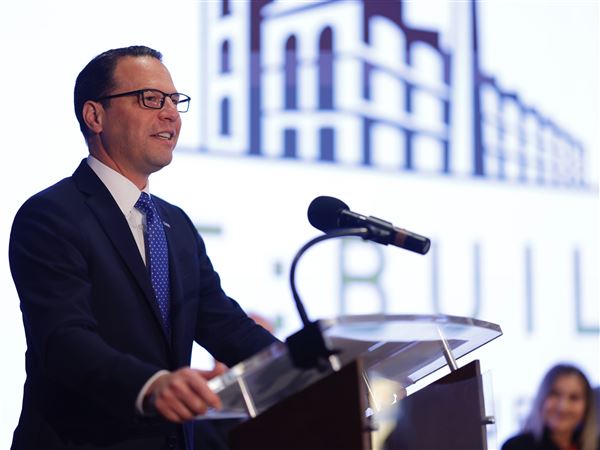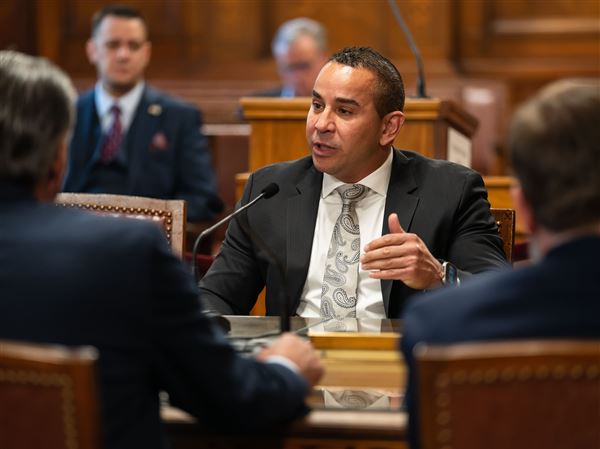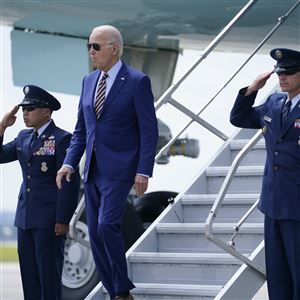WASHINGTON — President Joe Biden has long struggled to neatly summarize his sprawling economic vision.
It has been hard for voters to digest the mix of roads-and-bridges spending, tax hikes on big companies, tax credits for parents, tax breaks for renewable energy, grants to build computer chip factories, insulin price caps and slogans like “Build Back Better.”
And that barely covers the full breadth of what the administration is doing and trying to do.
Last week, the president gave a speech on “Bidenomics” in hopes that the term will lodge in voters’ minds ahead of the 2024 elections. But what is Bidenomics? Let’s just say the White House definition is different from the Republican one — evidence that catchphrases can be double-edged.
Mr. Biden says his economic philosophy is the opposite of a Republican approach that favors broad tax cuts to spur growth. He sees the government as using the tax code in a more targeted fashion and fashioning other programs to foster investment in new technologies, create jobs and boost upward mobility. He wants to do more to educate workers and foster competition within the U.S. economy in hopes of reducing prices.
“I came into office determined to change the economic direction of this country, to move from trickle-down economics to what everyone in The Wall Street Journal and Financial Times began to call ‘Bidenomics,’ ” the president said. “I didn't come up with the name. I really didn’t.”
But to Republicans, “Bidenomics” is a slur they can deploy. It’s a philosophy of government spending and anti-oil policies that they say fueled a spike in inflation last summer to a four-decade high. High prices have left U.S. adults deeply pessimistic about the economy, with just 34% approving of Mr. Biden’s leadership on the issue, according to a new poll from The Associated Press-NORC Center for Public Affairs.
Based on follow-up interviews with poll respondents, they’re far more aware of gasoline and grocery store prices than the details of Mr. Biden’s policies. When asked over the course of multiple polls, a few could cite the bipartisan infrastructure package that Mr. Biden signed into law. But the Inflation Reduction Act as well as the CHIPS and Science Act have yet to fully surface on the public radar, despite outreach by the administration and news coverage.
GOP lawmakers were faster to embrace the catch-term than the president.
“Instead of priming the pump, Bidenomics has emptied the tank,” future House Speaker Kevin McCarthy, R-Calif., said in a 2021 floor speech. “From inflation to gas lines, the American economy today looks more like it did in 1979 than 2019.”
In case you’re wondering, Mr. McCarthy's 1979 dig refers to high prices under then President Jimmy Carter, who in the 1980 election was bested by Republican Ronald Reagan.
A White House official, insisting on anonymity, said the term Bidenomics was not poll-tested.
The administration says it came from media reports, with The New York Times, National Public Radio, Bloomberg News, The Economist, and even AP using it in reports before the president took the oath of office.
Nor is the phrasing all that novel. Commentators have given the American public the portmanteau words Nixonomics, Carternomics, Reaganomics, Clintonomics, Bushonomics, Obamanomics. When the conservative economists Arthur Laffer and Stephen Moore wrote a book to describe the policies of then President Donald Trump, they entitled it “Trumponomics: Inside the America First Plan to Revive Our Economy.”
President Gerald Ford went with “Whip Inflation Now,” or WIN, in the mid-1970s. Ford’s push had a bit more fanfare than the Bidenomics launch did with the president's speech this past week at the Old Chicago Main Post Office.
For Ford’s effort, Meredith Willson — famous for writing the musical “The Music Man” — crafted a song entitled ”WIN!" In 1974, The New York Times published the lyrics: “Win! Win! Win! We’ll win together, Win together, that’s, the true American way, today. Who needs inflation? Not this nation.”
But, of course, Mr. Biden is trying to offer the country a doctrine rather than a jingle.
Democratic strategist Jesse Ferguson said the president wants to show the voters that he has plans and solutions for their troubles, not that he's necessarily fixed everything.
“For 40 years people have been clamoring for an approach to the economy that puts working people at the center instead of prioritizing the wealthy and that’s what he’s delivering on,” Mr. Ferguson said. “So the story that he can tell is a different approach to the economy and the proof is in the pudding. It’s also so core to who he is. People believe he’s the guy who’d make the economy work as hard for working people as working people work for the economy.”
First Published: July 3, 2023, 6:58 p.m.

















